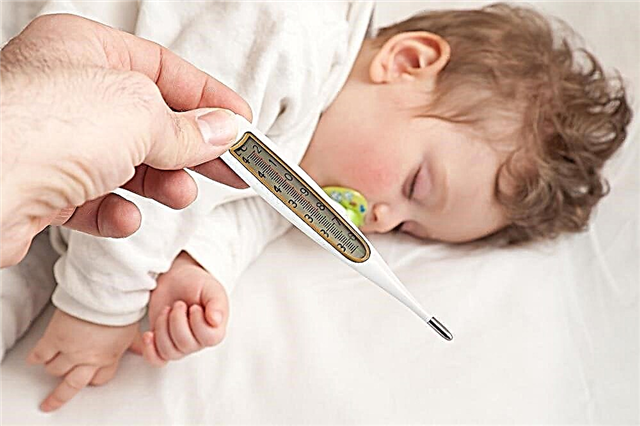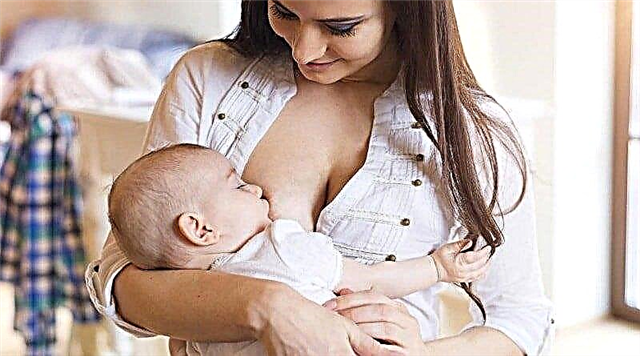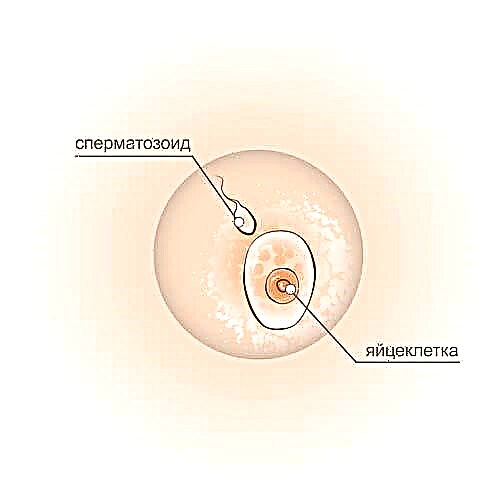One of the most exciting times for a young mother is the first two weeks of a child's life. She herself has not yet recovered from childbirth, she needs to learn how to hold the baby, wash him, and breastfeed correctly. Against the background of all the difficulties, the navel most of all worries many parents, because on the belly of a tiny child there is a real wound that can secrete an ichor, fester or even bleed.

Mother and child
What you need to know about the navel
Every placental living creature has a navel, that is, everyone who is carried by a pregnant mother in the abdomen, who receives food through the placenta through the umbilical cord. The navel is a trace or scar left after the removal of the umbilical cord. For physicians, especially surgeons, the navel is an anatomical landmark. Normally, it is located at the level of 3-4 vertebrae.
Many babies are born with an umbilical hernia. At the reception with a pediatric surgeon, the child will be examined, the specialist will pay special attention to the navel. A large percentage of children have an umbilical hernia, 0.5-1 cm in size. It does not require surgery and special care. As a rule, it will close itself soon. Larger umbilical hernias are recommended by experienced surgeons to correct no earlier than 5 years of age.
What every mother of a baby who, in addition to an umbilical wound, has an umbilical hernia, should know:
- The widespread opinion that the baby “screamed” the umbilical hernia, that is, formed it himself, straining his stomach while crying, is an invention. It is impossible to scream a hernia, it is formed in an unborn fetus, it becomes noticeable when the child fills his previously empty intestine with milk, which begins to press on the abdominal wall from the inside.
- The navel cannot be tied incorrectly to cause a hernia. In modern maternity hospitals, navels are not tied, but fastened with special clothespins. All children do this the same way.
- Sealing the navel with a plaster, especially putting a coin under it, is a direct way to introducing infection into the blood and dermatitis around the umbilical wound.

Clothespin for the umbilical residue
Attention! Proper care of the umbilical process and the subsequently formed umbilical wound promotes timely healing, which allows you to lead a full life.
Why does the navel bleed in newborns
A few minutes after the birth of the baby, the obstetrician cuts his umbilical cord, through which he received nutrients while in the womb. First, the doctor must make sure that the vein has closed, that is, the pulsation of the umbilical cord has stopped. This usually takes 1-2 minutes, after which the umbilical cord is clamped in two places, and a biological thread is cut between the clamps, which tied the child and the mother for 9 months.
From the moment of dissection, there is no blood flow in the umbilical cord, and the baby has an umbilical process on the stomach, about 2 cm in size. The rest of the cut umbilical cord at the junction with the abdominal cavity can bleed, because it itself no longer has active capillaries and vessels. The reasons why the navel in a newborn is bleeding, as a rule, of a mechanical nature:
- the umbilical wound is constantly in contact with the belt of the diaper;
- tight-fitting clothing injures the resulting crusts;
- in the process of caring for a child, adults may accidentally hit the clothespin if it is still present with the remainder of the umbilical cord.

Diaper with cutout
Why is prolonged bleeding dangerous?
When the umbilical wound in a newborn is bleeding, it threatens that infection can easily enter the circulatory system. As a rule, the bleeding itself is not severe, there is no threat of blood loss, however, this situation becomes a threat of infection.
If the blood does not stop for a long time, provided that there was no additional damage to the skin, it is important to inform the pediatrician. Prolonged bleeding is a reason to check the blood for clotting, as well as to exclude the pathology of fragile vessels.
Proper care of a newborn's navel
Doctors in the postpartum department tell every woman how to properly care for the navel at home. If there are babies with hernias in the department, a separate meeting with a neonatologist is held for the mothers of such babies, who tells in detail about the rules for treating the navel after the umbilical process has fallen off.
Home processing
When the birth took place without complications, and the mother and baby feel well, have no contraindications to discharge, they are allowed to go home on the third or fourth day. During this time, the remainder of the umbilical cord may still not fall off. There is nothing wrong with the fact that he will disappear not under the supervision of doctors, but at home.
During the day, the navel does not need to be touched again. The fewer people are concerned about his condition, the sooner he will heal. The popular pediatrician Komarovsky claims that the fewer people pick up a newborn with an unhealed wound on the abdomen, the less likely it is to become infected. In other words, as long as the wound is present, it is more reasonable to take the child in her arms only to the mother.
Means for treating the navel of a newborn
In order to provide proper wound care, a home medicine cabinet should contain:
- hydrogen peroxide, which provides basic care for an unhealed navel;
- Baneacin powder, which can be sprinkled on the wound, thereby providing protection against bacterial growth and infection;
- magnesium sulfate (magnesia) powder for preparing a solution in which you can moisten a cotton pad and apply to the wound if it closes.

Essential care product
The children's navel does not need any additional special means. The main task is to prevent infections from developing, to keep out dirt and bother as little as possible.
Wound care rules
If the umbilical wound in a newborn is bleeding, all that needs to be done is to try to exclude mechanical damage to the wound. The clothes of the newborn should not be tightly pressed against the belly, so as not to come into contact with the formed crusts. Particular attention should be paid to sliders - the elastic on them should be positioned so that there is no friction that provokes bleeding.
Any wound heals only when it dries completely. The umbilical is no exception. Therefore, the most important rule of care is not to soak the crusts in water, do not pour peroxide several times a day, do not experiment with soap solutions. The sooner the shoot dries up, the faster it will fall off. The remaining wound will also heal soon, if it is not prevented from drying.
Attention! Every time before starting hygiene procedures with the navel of a newborn, you should thoroughly wash your hands with soap and water.
How many times a day
The navel should be treated in the morning and in the evening. During the day, if there is no bloody discharge, the wound does not need to be touched. It is enough to remove liquid formations with a cotton pad and disinfect.
It is wiser to use Baneacin powder at night, when there is less manipulation with the child, he lies for several hours without needing to change clothes.
Is it possible to bathe a baby
Until the navel has healed, bathing the newborn is prohibited. This rule of pediatricians and neonatologists is associated with two aspects:
- Water, in contact with an open wound, will inevitably lead to the colonization of the baby's blood with various bacteria, that is, blood poisoning will begin.
- The beginning of healing is possible when the process and the scar from it are completely dry. Repeated wetting each time postpones the drying process.
Attention! The ban on bathing the child is not related to hygiene procedures. You can't bathe, but you need to wash!
The baby has postpartum lubrication on its skin, which should be carefully removed from the entire surface of the dermis. Particular attention should be paid to the armpits, the folds of the neck under the chin, the inner side of the elbow joints. Residual grease is a breeding ground for bacteria. Already on the second day, uncleaned areas begin to smell unpleasant, and the skin turns red and unpleasant to the baby. The umbilical wound can be expected to heal up to 3 weeks. An unwashed baby by this time will receive severe dermatitis, as well as inflammation of the skin of the groin area.

Mandatory hygiene procedures
It is necessary to wash the child under a stream of warm water, holding him on his hand, after each bowel movement. Some mums get by with wet wipes. Doctors do not prohibit this, but they warn that the composition of the lotion that moisturizes the napkin should not contain alcohol. The safest way is to purchase packages that have the mark "for children".
Prohibited actions
In no case should you tear off dried crusts. Baby's skin regenerates much faster than that of an adult. The resulting crust acts as a natural bactericidal dressing. Healing processes are actively underway, isolated from external factors. Violation of the dried out areas only increases the risk of infection and prolongs the healing time.
You cannot glue the navel with a plaster, fearing that the child will scream a hernia through the unformed navel. If the surgeon finds a hernia during a routine examination, this means that the baby already had it before his birth. For the same reason, you should not constantly hold the child in your arms, turning into a weak-willed slave. It is harmless for a baby to cry, it is not dangerous for his health, and it is also the only way to communicate with the outside world until he has learned to walk and even more so to talk.
Important! The idea of sticking a coin on the navel has nothing to do with the prevention of cannabis, but it provides a high probability of developing dermatitis and blood poisoning.
You can not often fill the wound with antiseptic solutions, because such treatment kills not only pathogenic bacteria, but also those that promote healing.
When to see a doctor
When the navel in a newborn is bleeding for a long time, you should contact your local pediatrician. An additional examination will identify or exclude problems in the hematopoietic system. With the help of the analysis, the doctor will be able to estimate the number of platelets responsible for stopping bleeding, as well as analyze the work of the child's blood vessels.
Nursing patronage visits the newborn several times after he and his mother leave the hospital:
- the next day after discharge, the nurse visits;
- on 3-4 days the district pediatrician comes;
- on the 10th day, the nurse visits again;
- on the 14-15th day the doctor comes the second time.

Nursing patronage
Each time they not only give instructions on how to care for babies, but also carefully assess their health. If there is a special scale at home for measuring the weight of babies, the doctor will ask about weight gain. Special attention is always paid to the navel. His paramedics examine and give an opinion on the progress of wound healing.
Signs of infection
If adults begin to notice that the general condition of the child is impaired, you always need to go to the doctor, without waiting for complications or the next scheduled visit of the pediatrician.
You should immediately seek medical help if:
- the child's body temperature is increased;
- disturbed general condition (tearfulness, refusal to breast, lack of normalization of mood in the mother's arms);
- the area around the navel is swollen;
- the umbilical wound is noticeably hotter than the rest of the body, does not stop tucking (the inflammatory process has begun);
- a rash appears around the navel and spreads over the body.
Additional Information. In medical practice, there are parents who are afraid of criticism from doctors and keep silent about any problems associated with caring for a child. This attitude towards the health of the baby can lead to a sad outcome. Only timely access to medical help can solve almost any problem related to the health of babies, without any consequences, you just need to hurry a little.
Possible complications
Most often, when the mother does not know what to do, if the navel of the newborn is bleeding, she, due to excitement and inexperience, can harm the baby with her actions. The most common complication in infants is vesiculopustulosis (staphylococcal periporitis). It develops more often in those children who have received a maternal infection while still in her stomach. Unsanitary conditions and improper care become the starting point for the multiplication of staphylococcus.
Also, pemphigus of newborns (pemphigus) is often found, which develops on days 1-3 in a child who is still in the hospital. The reason is non-compliance with hygiene standards by the medical staff or mistakes of the mother in caring for the child.
Every mother should know that, being 4 days after giving birth in a medical facility, there is no need to hesitate to ask questions of the child care professionals. Standing out against the background of newly given birth neighbors in the ward, clarifying the nuances, does not mean being stupid. For some reason, mothers do not think that her happy motherhood will depend on how correctly they understand the main aspects.



